Abstract
1. 5-HT was released into the lumen of the intact isolated rat stomach and into the bath fluid surrounding a preparation of the body and antrum stretched mechanically.
2. Release of 5-HT increased when the pressure inside the intact stomach was raised or when the body/antrum preparation was stretched.
3. This increased release was not prevented by hexamethonium, atropine, hyoscine or procaine, and was probably due to distortion of cells containing 5-HT.
4. During periods of peristalsis induced by transmural stimulation the pharmacological activity of the fluid in the stomach was usually increased owing to a greater release of 5-HT and also to the release of an unidentified substance.
5. In reserpine-treated rats, 5-HT was released into the stomach but transmural stimulation did not produce true peristalsis and only rhythmic contractions occurred.
6. Peristalsis was seldom reduced by methysergide, and it is concluded that 5-HT is not essential for gastric peristalsis in the rat.
Full text
PDF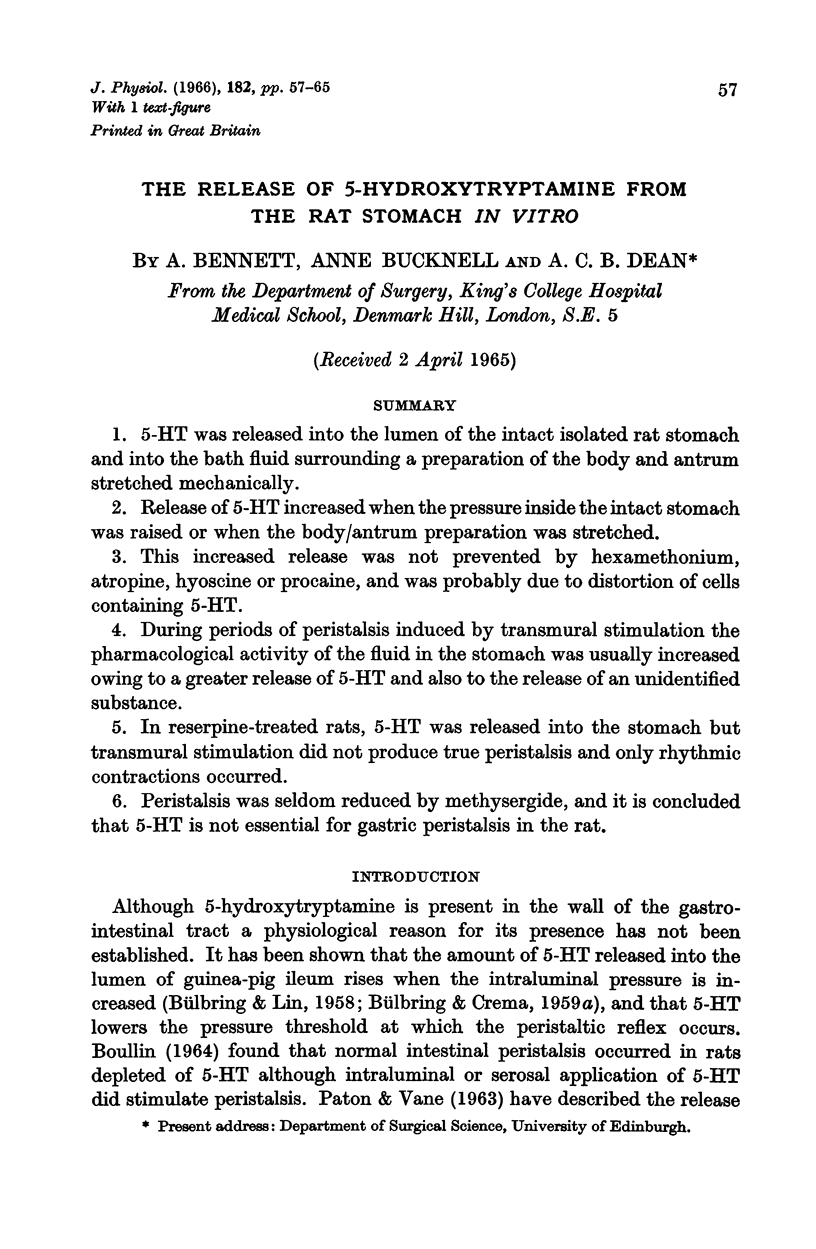
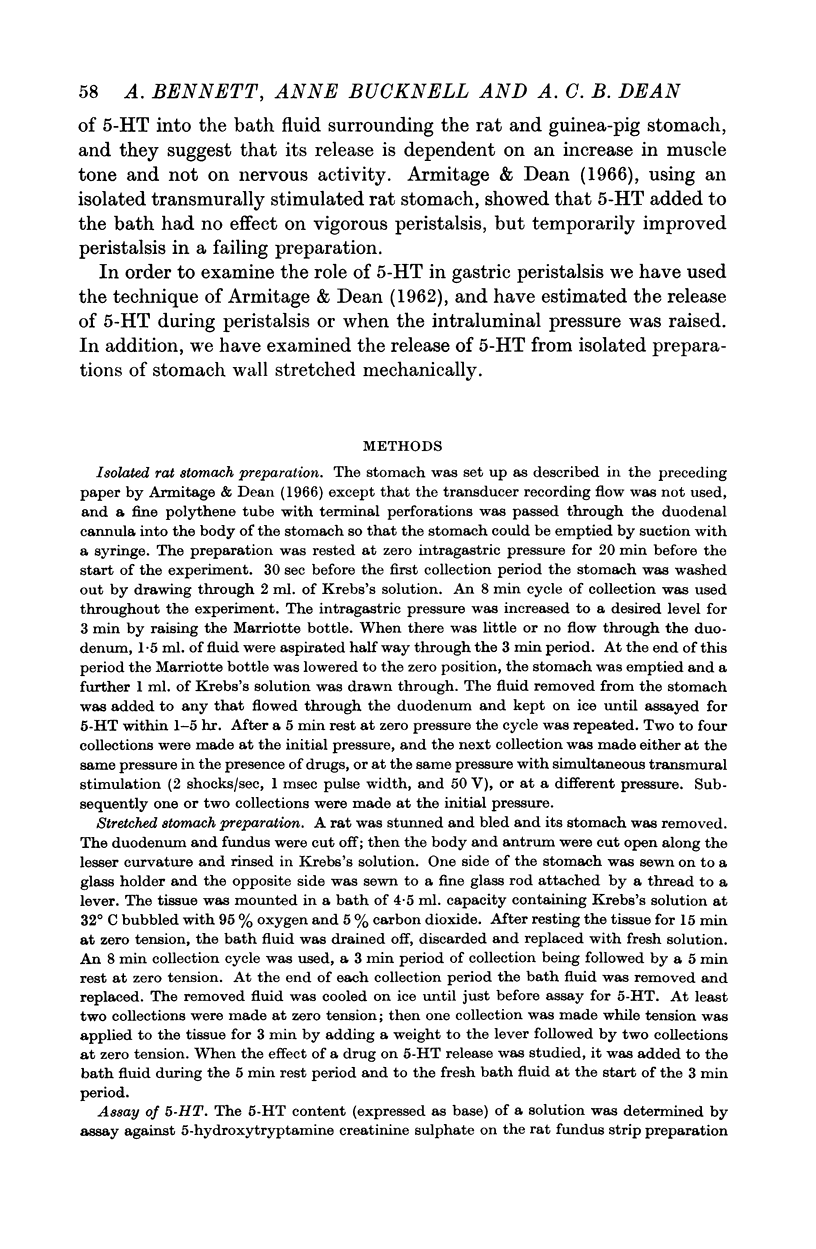
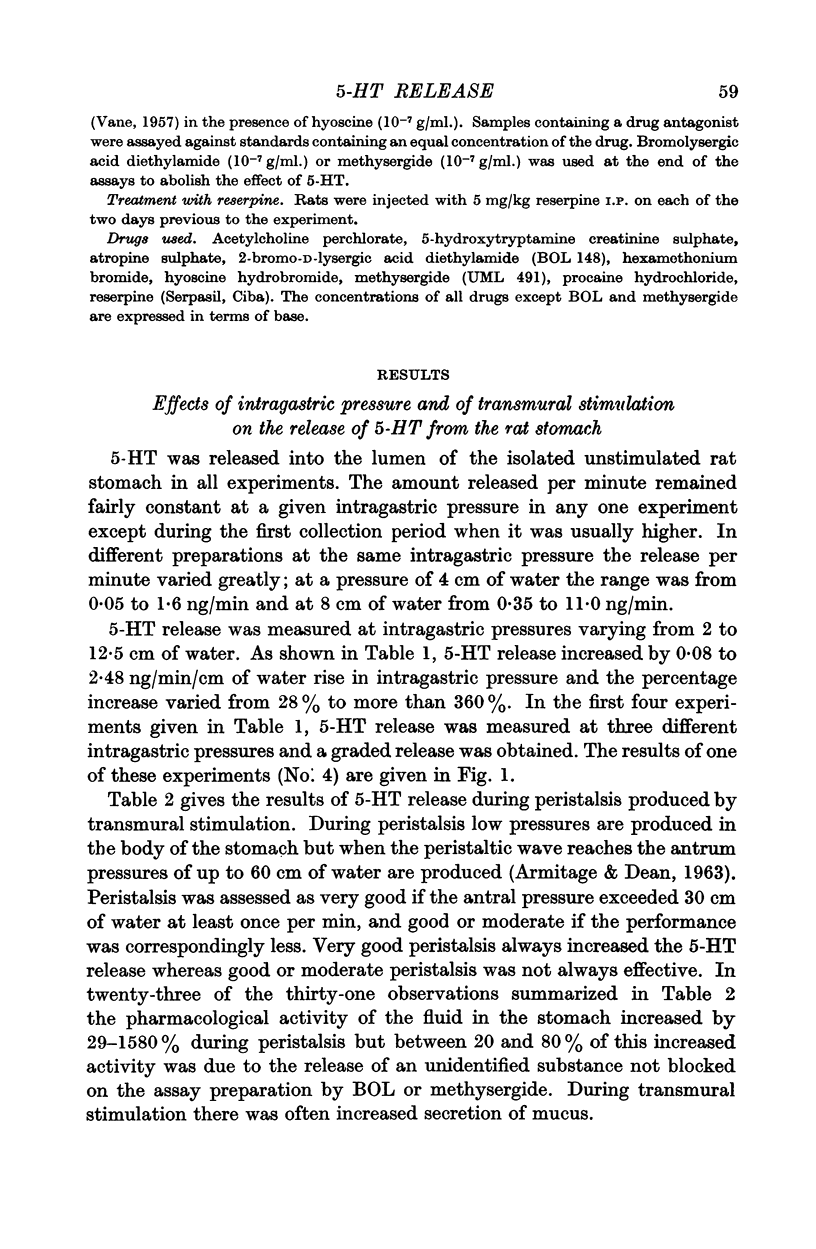

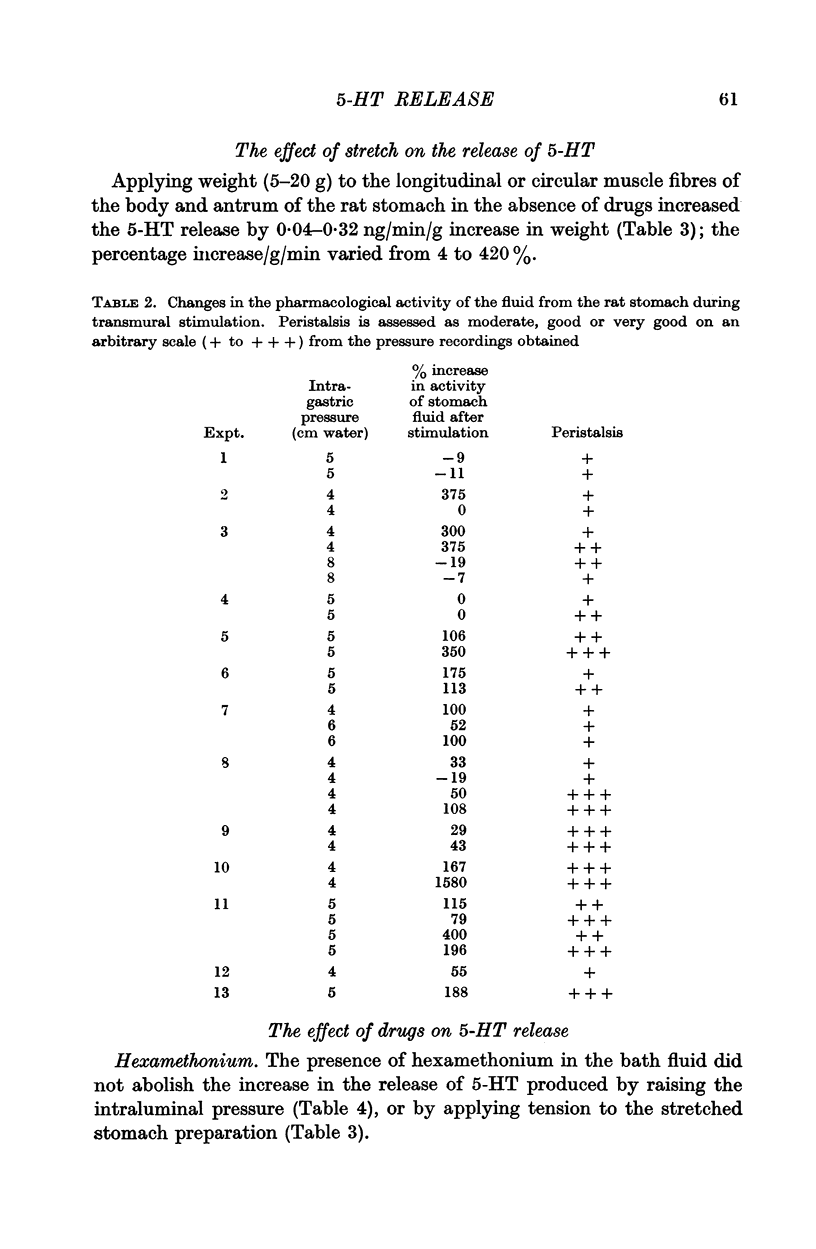
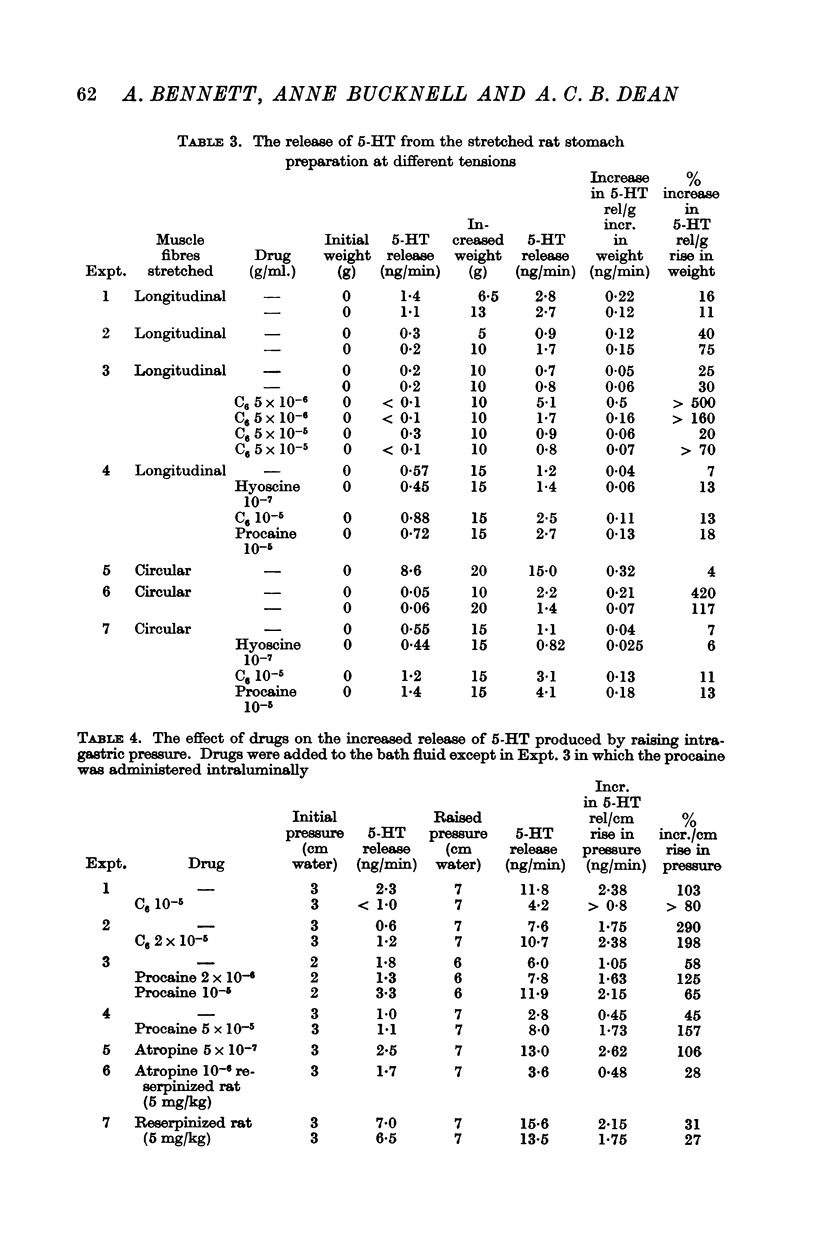


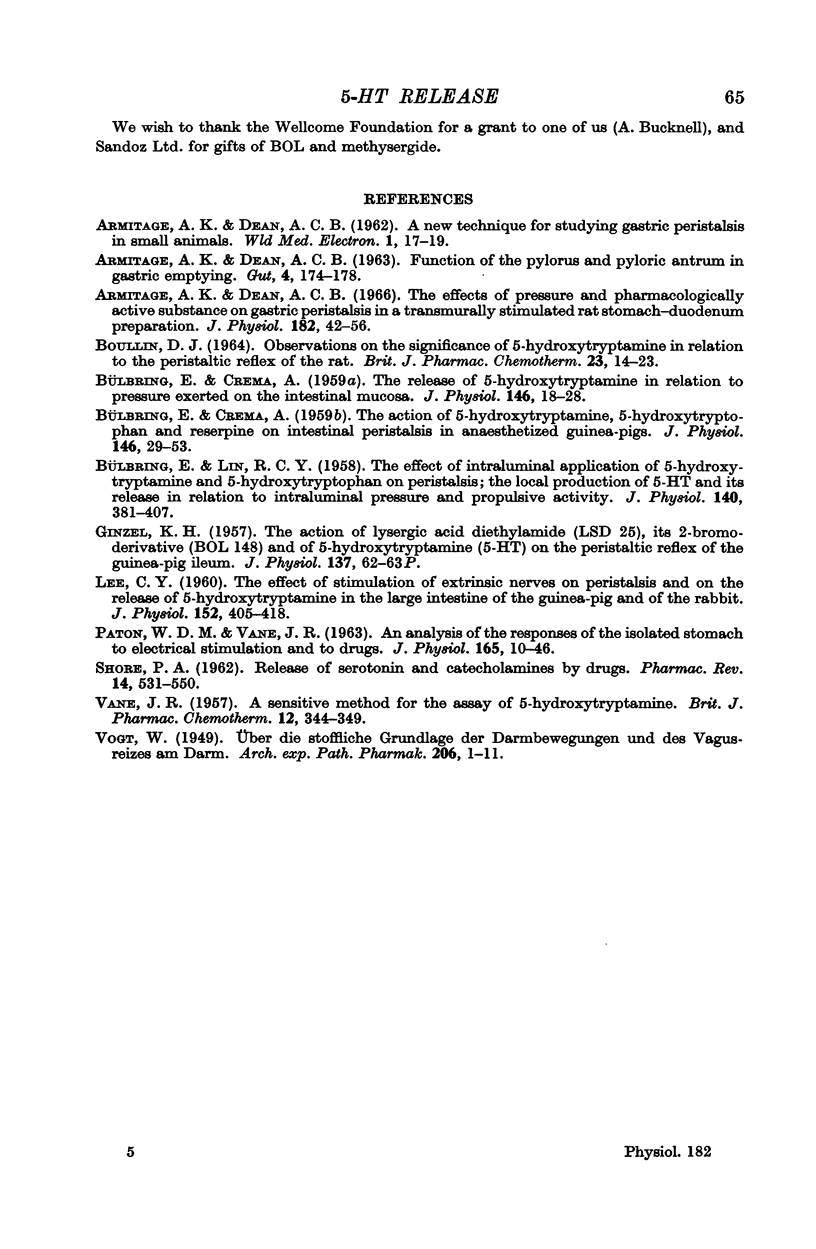
Selected References
These references are in PubMed. This may not be the complete list of references from this article.
- Armitage A. K., Dean A. C. Function of the pylorus and pyloric antrum in gastric emptying. Gut. 1963 Jun;4(2):174–178. doi: 10.1136/gut.4.2.174. [DOI] [PMC free article] [PubMed] [Google Scholar]
- Armitage A. K., Dean A. C. The effects of pressure and pharmacologically active substances on gastric peristalsis in a transmurally stimulated rat soomach-duodenum preparation. J Physiol. 1966 Jan;182(1):42–56. doi: 10.1113/jphysiol.1966.sp007807. [DOI] [PMC free article] [PubMed] [Google Scholar]
- BULBRING E., CREMA A. The action of 5-hydroxytryptamine, 5-hydroxytryptophan and reserpine on intestinal peristalsis in anaesthetized guinea-pigs. J Physiol. 1959 Apr 23;146(1):29–53. doi: 10.1113/jphysiol.1959.sp006176. [DOI] [PMC free article] [PubMed] [Google Scholar]
- BULBRING E., LIN R. C. The effect of intraluminal application of 5-hydroxytryptamine and 5-hydroxytryptophan on peristalsis; the local production of 5-HT and its release in relation to intraluminal pressure and propulsive activity. J Physiol. 1958 Mar 11;140(3):381–407. [PMC free article] [PubMed] [Google Scholar]
- LEE C. Y. The effect of stimulation of extrinsic nerves on peristalsis and on the release of 5-hydroxytryptamine in the large intestine of the guinea-pig and of the rabbit. J Physiol. 1960 Jul;152:405–418. doi: 10.1113/jphysiol.1960.sp006496. [DOI] [PMC free article] [PubMed] [Google Scholar]
- PATON W. D., VANE J. R. Analysis of he responses of the isolated stomach to electrical stimulation and to drugs. J Physiol. 1963 Jan;165:10–46. doi: 10.1113/jphysiol.1963.sp007040. [DOI] [PMC free article] [PubMed] [Google Scholar]
- SHORE P. A. Release of serotonin and catecholamines by drugs. Pharmacol Rev. 1962 Dec;14:531–550. [PubMed] [Google Scholar]
- VANE J. R. A sensitive method for the assay of 5-hydroxytryptamine. Br J Pharmacol Chemother. 1957 Sep;12(3):344–349. doi: 10.1111/j.1476-5381.1957.tb00146.x. [DOI] [PMC free article] [PubMed] [Google Scholar]


